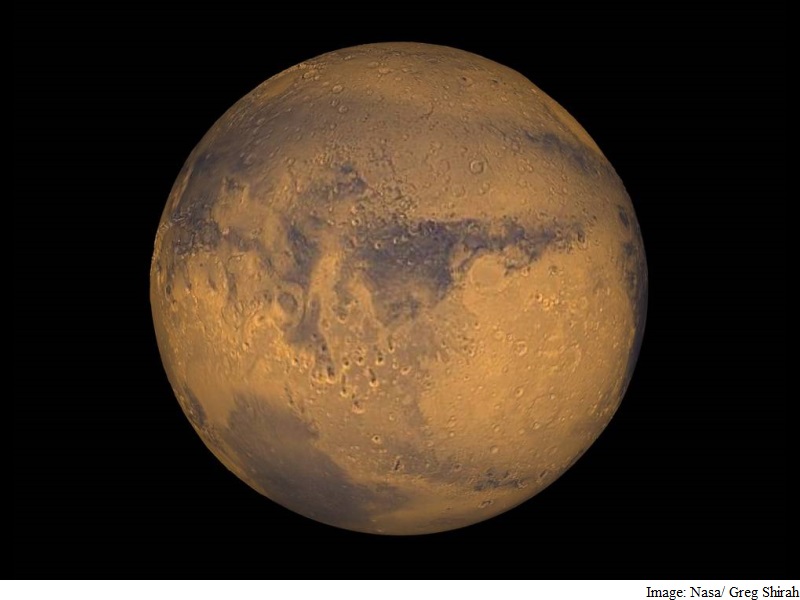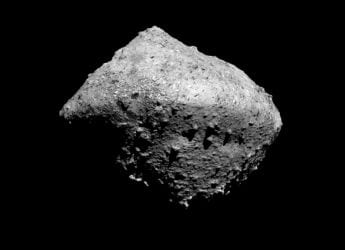- Home
- Science
- Science News
- In an Interplanetary First, NASA to Fly a Helicopter on Mars
In an Interplanetary First, NASA to Fly a Helicopter on Mars

NASA said on Friday it will send a small helicopter to Mars as part of the space agency's 2020 mission to place a next-generation rover on the Martian surface, marking the first time such an aircraft will be used on another world.
The remote-controlled Mars Helicopter, designed to take flight in the thin Martian atmosphere with twin counter-rotating blades, weighs about four pounds (1.8 kilograms), with a fuselage the size of a softball, NASA said. Its blades will spin at almost 3,000 rpm, roughly 10 times the rate employed by helicopters on Earth.
"The altitude record for a helicopter flying here on Earth is about 40,000 feet (12,200 meters). The atmosphere of Mars is only one percent that of Earth, so when our helicopter is on the Martian surface, it's already at the Earth equivalent of 100,000 feet (30,480 meters) up," Mimi Aung, the Mars Helicopter project manager at NASA's Jet Propulsion Laboratory, said in a statement.
NASA officials said the rotorcraft will reach the Red Planet's surface attached to the car-sized rover. After placing the helicopter on the ground, the rover will be directed to drive to a safe distance to relay commands. Controllers on Earth will command the helicopter to take its first autonomous flight after its batteries are charged and tests are conducted, NASA said.
"The idea of a helicopter flying the skies of another planet is thrilling," NASA Administrator Jim Bridenstine said in a statement.
The helicopter is intended to demonstrate the viability and usefulness of such aircraft on Mars, NASA said, with potential roles as a low-flying scout or to reach locations inaccessible from the ground.
NASA said it plans a 30-day flight test period that will include up to five flights, starting with a short vertical jaunt to hover for about 30 seconds at an altitude of 10 feet (3 meters) and progressing to flight distances up to a few hundred yards and durations up to 90 seconds.
The helicopter contains solar cells to charge its lithium-ion batteries and a heating mechanism to keep it warm during frigid nights.
The Mars 2020 rover mission is scheduled to launch in July 2020 from Cape Canaveral Air Force Station in Florida and reach Mars in February 2021. The rover is designed to carry out geological studies and ascertain the habitability of the Martian environment, NASA said.
© Thomson Reuters 2018
For the latest tech news and reviews, follow Gadgets 360 on X, Facebook, WhatsApp, Threads and Google News. For the latest videos on gadgets and tech, subscribe to our YouTube channel. If you want to know everything about top influencers, follow our in-house Who'sThat360 on Instagram and YouTube.
Related Stories
- Samsung Galaxy Unpacked 2025
- ChatGPT
- Redmi Note 14 Pro+
- iPhone 16
- Apple Vision Pro
- Oneplus 12
- OnePlus Nord CE 3 Lite 5G
- iPhone 13
- Xiaomi 14 Pro
- Oppo Find N3
- Tecno Spark Go (2023)
- Realme V30
- Best Phones Under 25000
- Samsung Galaxy S24 Series
- Cryptocurrency
- iQoo 12
- Samsung Galaxy S24 Ultra
- Giottus
- Samsung Galaxy Z Flip 5
- Apple 'Scary Fast'
- Housefull 5
- GoPro Hero 12 Black Review
- Invincible Season 2
- JioGlass
- HD Ready TV
- Laptop Under 50000
- Smartwatch Under 10000
- Latest Mobile Phones
- Compare Phones
- Red Magic 11 Pro
- Red Magic 11 Pro+
- Huawei Nova Flip S
- Huawei Nova 14 Vitality Edition
- OPPO Find X9
- OPPO Find X9 Pro
- Honor Magic 8 Pro
- Honor Magic 8
- MacBook Pro 14-inch (M5, 2025)
- Asus Vivobook S16 (S3607QA)
- OPPO Pad 5
- Apple iPad Pro 13-inch (2025) Wi-Fi + Cellular
- OPPO Watch S
- Honor Watch 5 Pro
- Xiaomi Xiaomi TV S Pro Mini LED 55 2026
- Xiaomi TV S Pro Mini LED 65 2026
- Asus ROG Ally
- Nintendo Switch Lite
- Haier 1.6 Ton 5 Star Inverter Split AC (HSU19G-MZAID5BN-INV)
- Haier 1.6 Ton 5 Star Inverter Split AC (HSU19G-MZAIM5BN-INV)

















